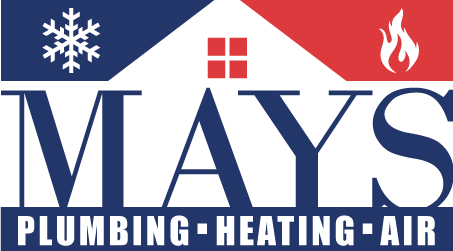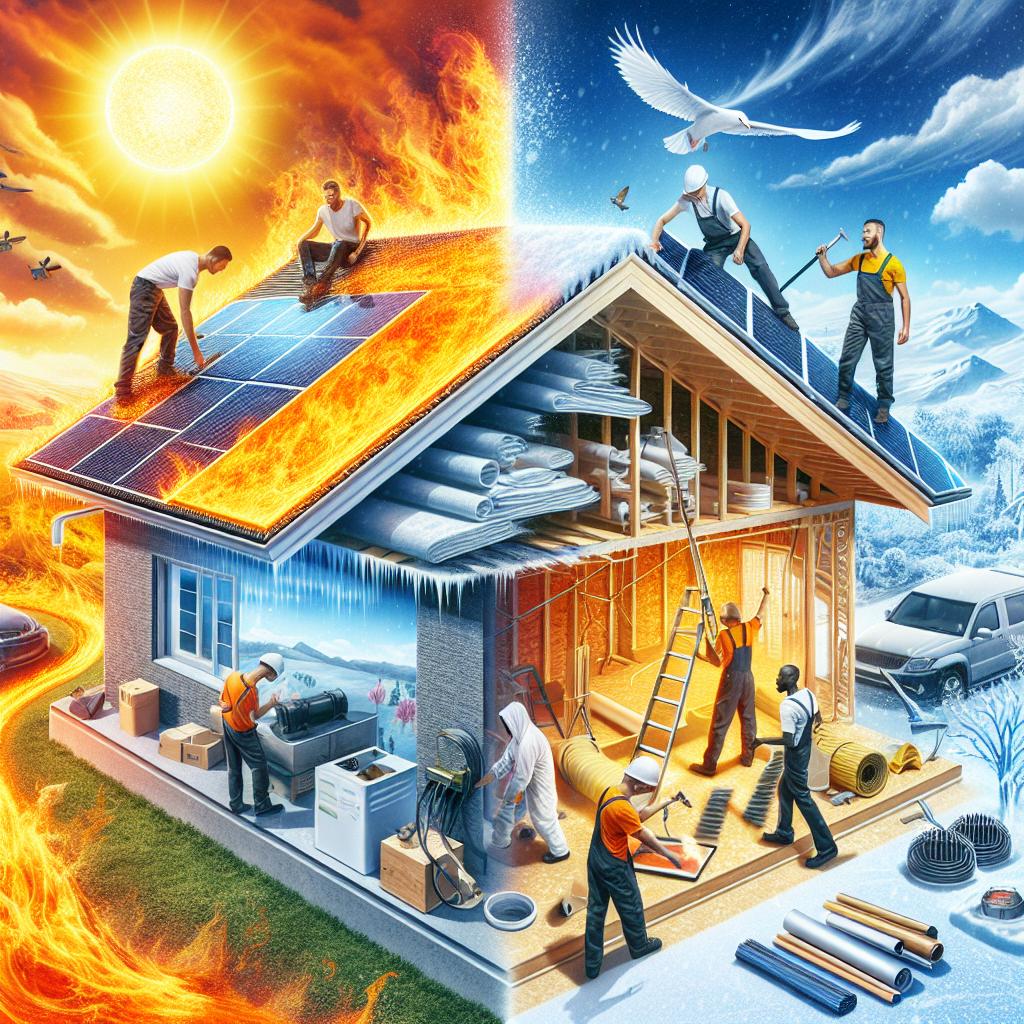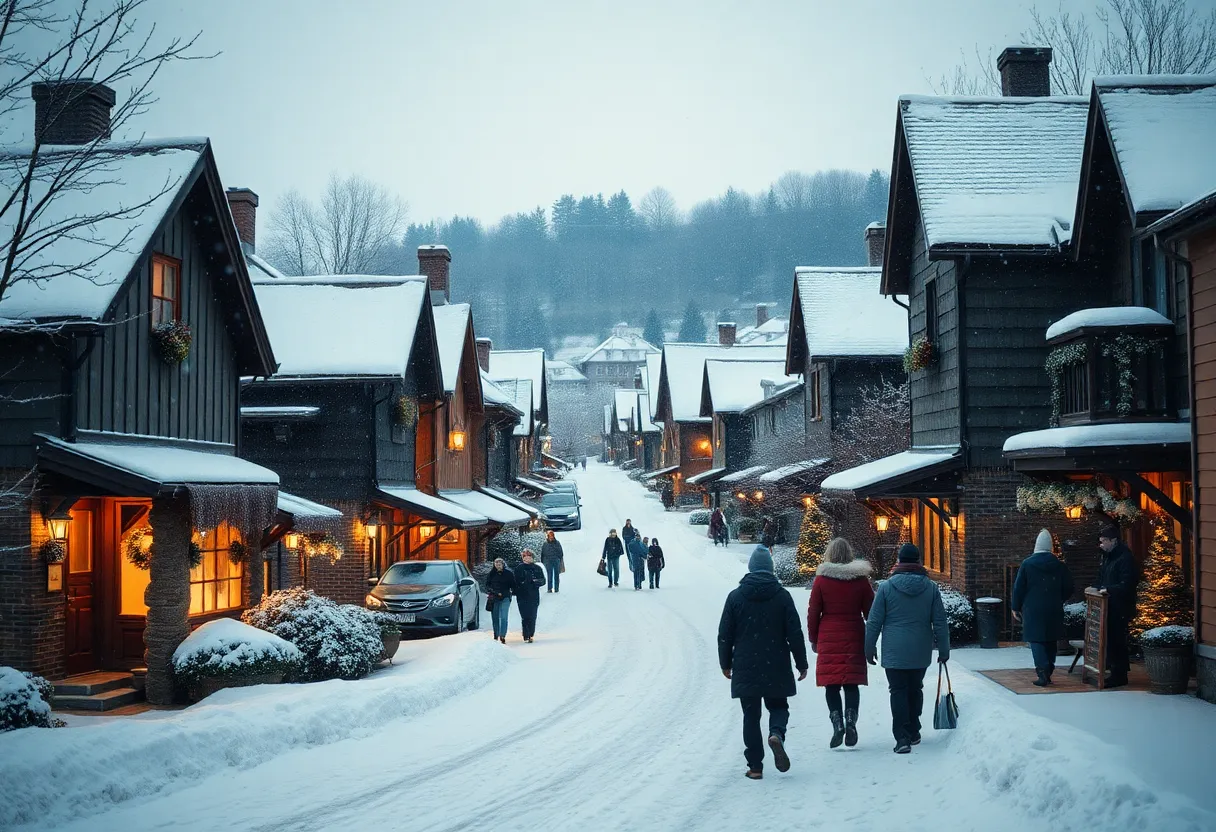How to Choose the Right Roof Structure for Your Climate: Key Considerations for Homeowners
Choosing the right roof structure for your home can be a daunting task, and this decision heavily depends on your local climate. Each environment comes with its unique set of challenges, which directly influence the longevity and performance of your roof. Implementing the proper roof design can enhance energy efficiency, improve durability, and effectively shelter your family. This article will guide homeowners through essential considerations when selecting a roof structure tailored to specific climates.
Common Roof Styles
Understanding basic roof styles is crucial in making an informed decision. Here are some of the most prevalent types:
- Gable Roof: Characterized by a triangular shape, this style allows for effective water runoff and is excellent for areas with heavy rainfall.
- Hip Roof: With slopes on all sides, this structure is stable and withstands strong winds, making it suitable for storm-prone regions.
- Flat Roof: While offering easy access for maintenance, flat roofs may pose drainage issues in high rainfall areas.
- Mansard Roof: This design has steep slopes, allowing extra living space. It performs well in varying climates.
- Monitor Roof: This style features gabled sections. It is advantageous for ventilation in temperate climates.
Key Climate Considerations
1. Temperature Extremes
Regions that experience extreme temperatures greatly influence roofing choices. In hot climates, roofs with light colors or reflective materials aid in reducing heat absorption. Conversely, homeowners in cold climates should consider roofs that can handle snowfall accumulation without risk of structural failure.
2. Precipitation
Areas with heavy rainfall or snow must focus on effective water drainage systems. **Selecting a steeper roof pitch** helps direct water and prevent pooling, which can lead to leaks. Conversely, in drier climates, less steep roof designs may suffice and offer energy efficiency benefits.
3. Wind Resistance
Wind-prone areas necessitate roofs that can withstand high wind speeds. Structures like hip roofs perform well due to their aerodynamic nature. Additionally, incorporating durable materials such as metal or reinforced shingles can enhance your roof’s wind resistance.
4. Sun Exposure
Regions with considerable sun exposure benefit from roofs that use heat-reflective materials. Materials like white TPO or metal roofing significantly decrease indoor temperatures and energy costs. Homeowners should prioritize UV-resistant coatings to extend the roof’s lifespan.
5. Humidity and Rainfall
In humid climates, mold and mildew growth can become problematic. Opting for ventilation systems, combined with breathable materials, helps combat moisture buildup. Use materials with high resistance to rot, such as metal or synthetic options, to ensure longevity.
Roofing Materials and Their Suitability
Your choice of roofing material also plays a major role in how well the structure performs under specific climatic conditions:
1. Asphalt Shingles
Asphalt shingles are prevalent due to their affordability and versatility, suitable for a broad range of climates but have limitations under extreme conditions.
2. Metal Roofing
This material is highly durable and suitable for both hot and cold environments. It performs exceptionally well in snow, as the sleek surface helps melt it away. Metal roofing also reflects sunlight, enhancing energy efficiency.
3. Clay and Concrete Tiles
These materials excel in hot climates, as their thermal mass helps keep homes cool. However, they are heavy and may not be ideal for every roof structure. They are also less suitable in regions with heavy snowfall unless installed correctly.
4. Slate Roofing
Slate offers exceptional durability and longevity. It is ideal for both warm and cold climates, although it requires a strong roof framework due to its weight.
5. Wood Shingles and Shakes
Wood offers natural insulation but may not be suitable for humid climates without proper sealing, as it can be susceptible to rot. **Regular maintenance** is essential for longevity in these environments.
Local Building Codes and Regulations
Each region has unique building codes and regulations that dictate specific standards for roofing structures. Homeowners should consult local authorities to ensure their chosen roofing materials and designs comply with legal requirements. Failing to do so can lead to fines or additional renovation costs in the future.
Environmental Impact and Sustainability
Considering the environmental impact of roofing choices is becoming increasingly vital for homeowners. Opting for eco-friendly materials can reduce energy consumption and lessen the overall carbon footprint. Some sustainable roofing options include:
- Green Roofs: These living systems provide insulation and reduce stormwater runoff.
- Recycled Materials: Using materials like recycled shingles or metal reduces waste and resource consumption.
Long-Term Maintenance Considerations
Regardless of the roof structure chosen, long-term maintenance is essential for ensuring durability and performance. Regular inspections can identify potential problems early. Factors such as climate, roofing type, and material lifespan all play a role in maintenance needs.
1. Frequency of Inspections
Plan for seasonal inspections in high-stress climates. Checking for wear and tear, debris buildup, or damaged shingles helps extend the roof’s life.
2. Cleaning and Repairing
Regular cleaning helps prevent issues like moss growth in humid climates or debris buildup in harsher conditions. Periodic repairs must be conducted as needed to maintain structural integrity.
Conclusion
Selecting the right roof structure is not just about aesthetics; it’s a crucial decision that directly influences energy efficiency, durability, and protection from the elements. By analyzing your local climate, understanding the implications of specific roofing materials, and keeping maintenance considerations in mind, you can make an informed choice for your home. Emphasizing practicality, sustainability, and longevity will ensure your roofing investment serves you well for years to come.
Author: STAFF HERE Chapin
CHAPIN STAFF WRITER The CHAPIN STAFF WRITER represents the experienced team at HEREchapin.com, your go-to source for actionable local news and information in Chapin, Lexington County, and beyond. Specializing in "news you can use," we cover essential topics like product reviews for personal and business needs, local business directories, politics, real estate trends, neighborhood insights, and state news affecting the area—with deep expertise drawn from years of dedicated reporting and strong community input, including local press releases and business updates. We deliver top reporting on high-value events such as the Chapin Christmas Parade, Fourth of July Celebration, and the Chapin Fall Festival. Our coverage extends to key organizations like the Chapin Chamber of Commerce and the Lexington School District One, plus leading businesses in retail and recreation that power the local economy such as Lake Murray Tourism and the Chapin Visitor Information. As part of the broader HERE network, including HEREaiken.com, HEREbeaufort.com, HEREchapin.com, HEREcharleston.com, HEREclinton.com, HEREcolumbia.com, HEREgeorgetown.com, HEREgreenwood.com, HEREgreenville.com, HEREhiltonhead.com, HEREirmo.com, HEREmyrtlebeach.com, HEREnewberry.com, HERErockhill.com, HEREspartanburg.com, HEREaustin.com, HEREcollegestation.com, HEREdallas.com, HEREhouston.com, and HEREsanantonio.com, we provide comprehensive, credible insights into South Carolina's dynamic landscape.




 Mays Contracting
Mays Contracting

